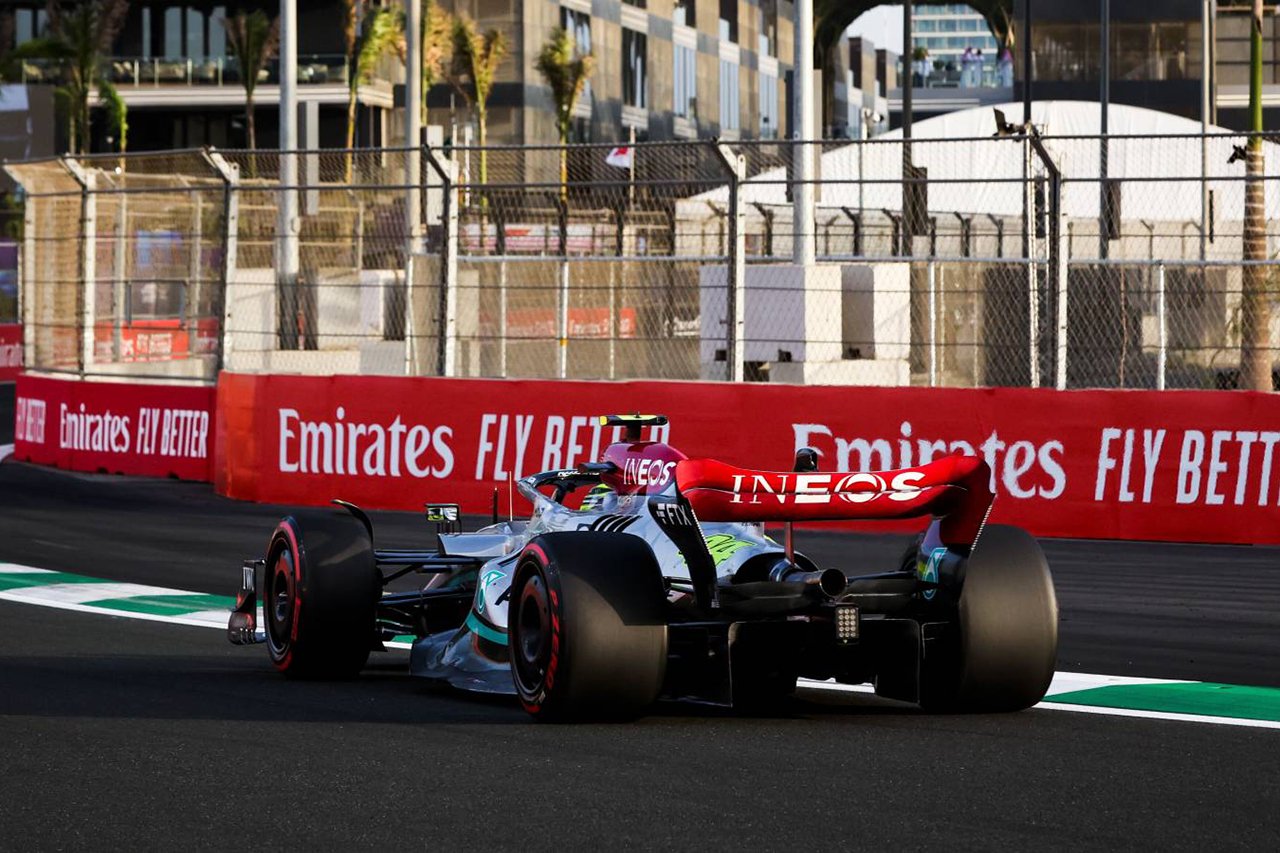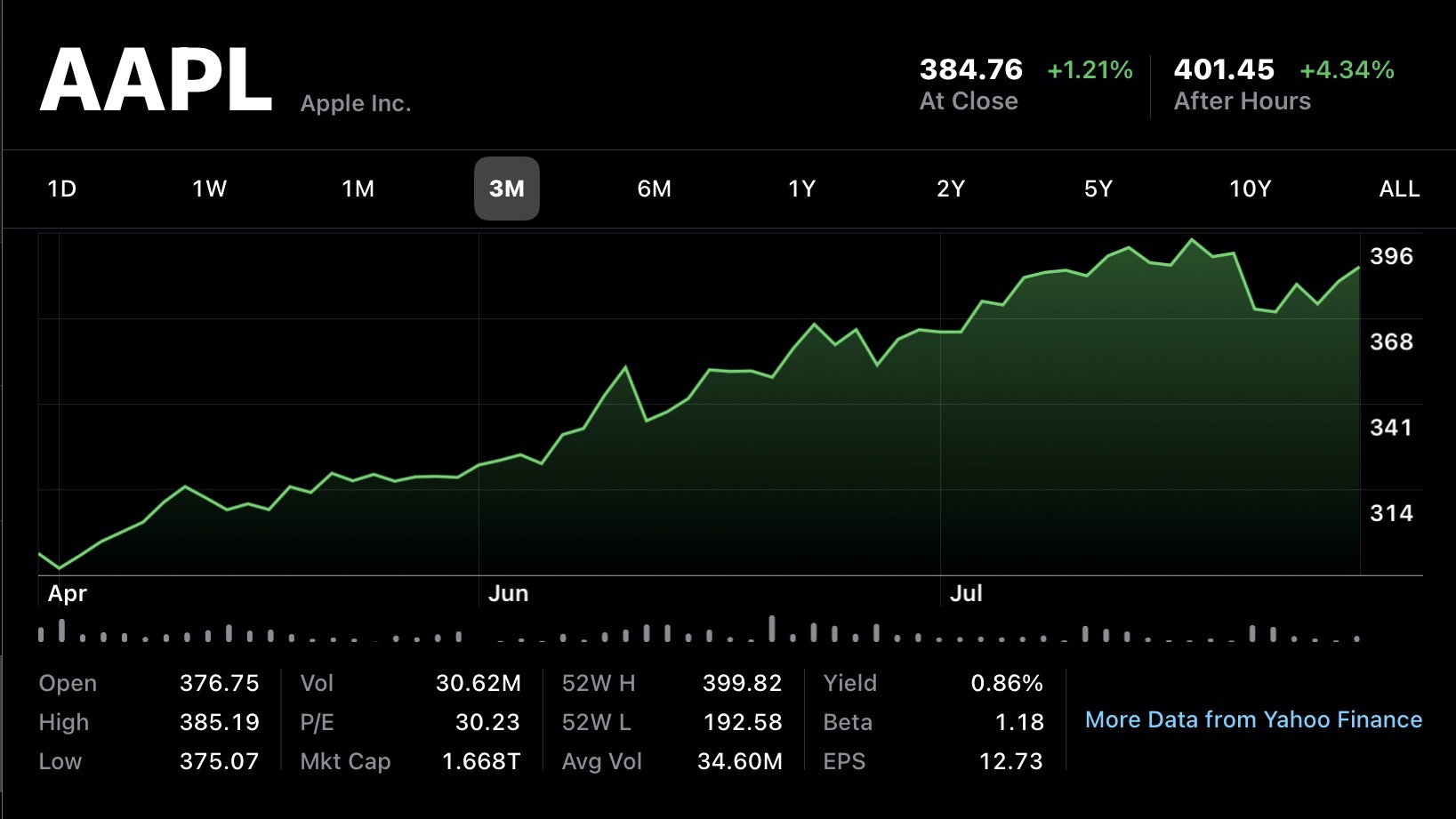George Russell's Crucial Decision: Solving Mercedes' Key Flaw

Table of Contents
Understanding the W13's Porpoising Problem
Porpoising, a violent bouncing caused by aerodynamic instability at high speeds, plagued the Mercedes W13 throughout much of the 2022 season. This aerodynamic phenomenon occurs when the car's underbody loses downforce, causing it to rise and fall repeatedly. This had several detrimental effects on performance and driver comfort:
- Loss of downforce: The intermittent loss of ground effect significantly reduced downforce, impacting cornering speed and overall car stability.
- Reduced tire grip and handling: The bouncing compromised tire contact with the track, leading to reduced grip and making the car unpredictable and difficult to control.
- Physical strain on the driver: The constant jarring and bouncing from porpoising was incredibly physically demanding, leading to fatigue and affecting driver performance.
- Impact on race pace and qualifying performance: The combination of reduced grip, instability, and driver fatigue directly translated into slower lap times, hindering both qualifying performance and race pace.
Mercedes initially struggled to find a solution, leading to a frustrating start to the season. The team tried various setup changes and aerodynamic modifications, but the porpoising persisted, significantly hindering their competitiveness.
Russell's Strategic Approach to Mitigating Porpoising
George Russell's contribution went far beyond simply driving the car. His strategic approach and meticulous feedback were instrumental in helping Mercedes understand and address the porpoising issue. His contributions involved:
- Data analysis: Russell provided incredibly detailed feedback on the car's behavior and his physical sensations, offering engineers crucial qualitative data beyond standard telemetry. This granular information proved invaluable.
- Setup adjustments: He actively collaborated with the engineers, suggesting setup changes and offering insights into how specific adjustments impacted the car's response to porpoising. This collaborative approach proved critical.
- Race strategy adaptation: Russell cleverly adapted his driving style and race strategy to minimize the impact of porpoising. This involved managing tire temperatures more effectively and adjusting his driving lines to reduce the severity of the bouncing.
- Tire management: By carefully managing tire wear and temperature, Russell ensured optimal performance despite the car's limitations, extracting the maximum possible pace from compromised conditions.
For example, at the Spanish Grand Prix, Russell's meticulous feedback allowed the team to make crucial setup adjustments that noticeably reduced the severity of the porpoising, ultimately improving his race pace and final finishing position.
The Importance of Driver Feedback in Solving the Problem
The success in mitigating the W13's porpoising highlighted the crucial role of driver feedback in Formula 1 car development. While telemetry provides quantitative data, qualitative driver feedback offers an invaluable perspective:
- Qualitative data invaluable to engineers: Russell's descriptions of the car's behaviour – the feeling of the bouncing, the loss of grip, and the impact on his driving – were crucial for the engineers' understanding.
- Russell's precision and detailed feedback: His ability to articulate precisely what he was experiencing allowed the engineers to pinpoint the problem areas more effectively.
- Faster development cycles through effective communication: The clear and efficient communication between Russell and the engineering team enabled faster iteration and development of solutions.
Compared to Hamilton's experience, Russell's proactive approach and precise feedback proved more effective in guiding the team's development efforts, highlighting the importance of driver-engineer collaboration.
Long-Term Impact of Russell's Decisions on Mercedes' Performance
Russell's contributions extended beyond short-term performance gains. His work significantly shaped the development of the W13 and influenced future Mercedes car designs:
- Improved aerodynamic efficiency: The solutions found to mitigate porpoising also led to improvements in overall aerodynamic efficiency, enhancing the car's performance.
- Enhanced car stability and handling: Addressing the porpoising issue resulted in a more stable and predictable car, enhancing driver confidence and improving overall handling.
- Increased driver confidence: As the car became more manageable, Russell's confidence grew, allowing him to push harder and achieve better results.
- Contribution to improved race results and championship points: The collective improvements directly translated into improved race results and secured valuable championship points for Mercedes.
The positive impact rippled through the team, boosting morale and reinforcing the importance of driver feedback in the design process, positively impacting future car developments.
Conclusion
George Russell's proactive approach to tackling the Mercedes W13's porpoising problem, through strategic decision-making and effective communication, played a vital role in improving the car's performance and Mercedes' overall competitiveness in the 2022 F1 season. His detailed feedback and ability to adapt his driving style were instrumental in helping Mercedes engineers understand and mitigate the issues, ultimately showcasing the crucial role of driver input in overcoming significant technical challenges.
Call to Action: Learn more about how George Russell’s crucial decisions changed the game for Mercedes. Explore the strategies he employed to overcome the W13's flaws and discover the impact his actions had on the team's performance. Discover more about George Russell’s crucial decisions and their impact on Mercedes' success.

Featured Posts
-
 Apple Stock Performance Q2 Earnings Preview
May 25, 2025
Apple Stock Performance Q2 Earnings Preview
May 25, 2025 -
 Is Naomi Campbell Banned From The 2025 Met Gala A Look At The Wintour Feud
May 25, 2025
Is Naomi Campbell Banned From The 2025 Met Gala A Look At The Wintour Feud
May 25, 2025 -
 Is This Tim Cooks Worst Year Yet Examining Apples Recent Challenges
May 25, 2025
Is This Tim Cooks Worst Year Yet Examining Apples Recent Challenges
May 25, 2025 -
 Live M56 Traffic Updates Motorway Closed After Serious Crash
May 25, 2025
Live M56 Traffic Updates Motorway Closed After Serious Crash
May 25, 2025 -
 Chinese Tennis Ace Advances To Italian Open Quarterfinals
May 25, 2025
Chinese Tennis Ace Advances To Italian Open Quarterfinals
May 25, 2025
Latest Posts
-
 Grand Ecart D Age Entre Les Enfants L Experience De Melanie Thierry Et Raphael
May 25, 2025
Grand Ecart D Age Entre Les Enfants L Experience De Melanie Thierry Et Raphael
May 25, 2025 -
 Melanie Thierry Et Raphael Les Joies Et Les Difficultes De La Parentalite A Plusieurs Ages
May 25, 2025
Melanie Thierry Et Raphael Les Joies Et Les Difficultes De La Parentalite A Plusieurs Ages
May 25, 2025 -
 Elever Trois Enfants Avec Un Grand Ecart D Age Le Temoignage De Melanie Thierry Et Raphael
May 25, 2025
Elever Trois Enfants Avec Un Grand Ecart D Age Le Temoignage De Melanie Thierry Et Raphael
May 25, 2025 -
 Melanie Thierry Et Raphael Parents De Trois Enfants Une Difference D Age Et Ses Defis
May 25, 2025
Melanie Thierry Et Raphael Parents De Trois Enfants Une Difference D Age Et Ses Defis
May 25, 2025 -
 Melanie Thierry Et Raphael L Education De Leurs Trois Enfants Un Defi A Chaque Age
May 25, 2025
Melanie Thierry Et Raphael L Education De Leurs Trois Enfants Un Defi A Chaque Age
May 25, 2025
